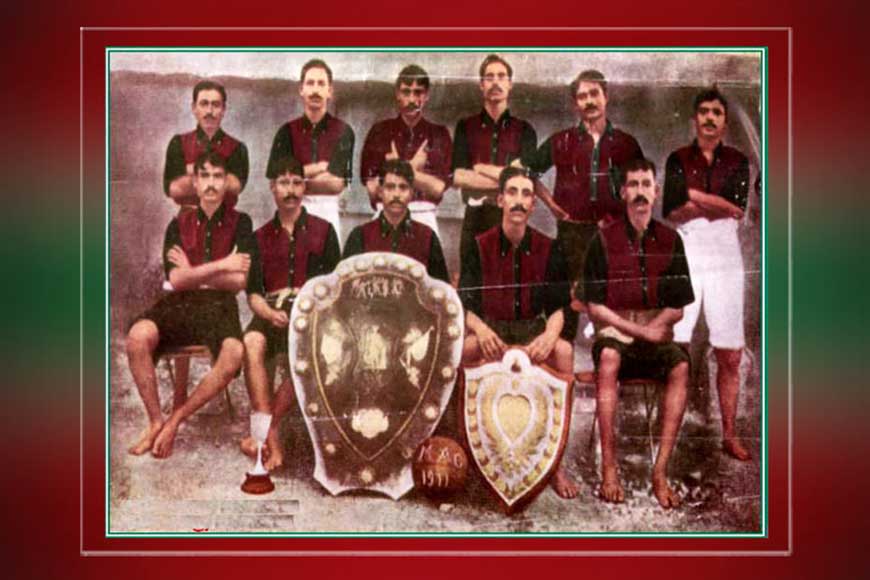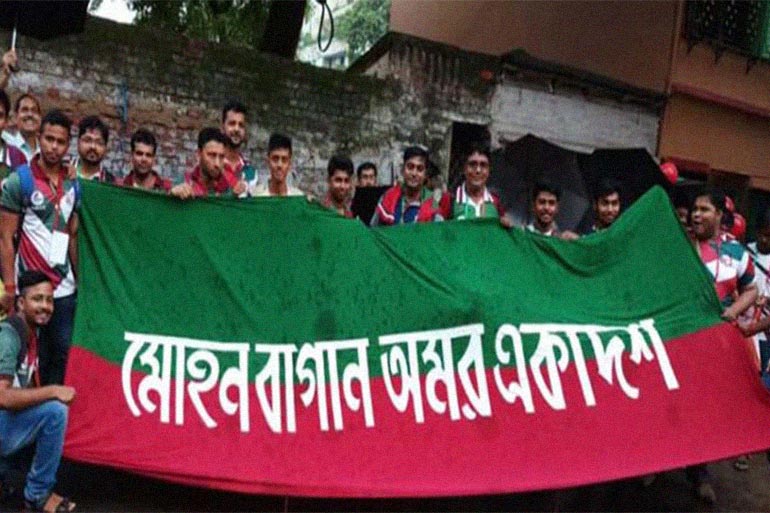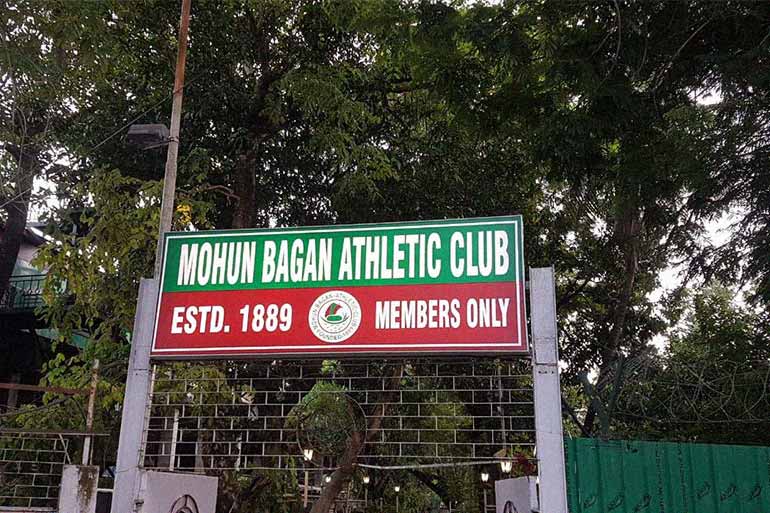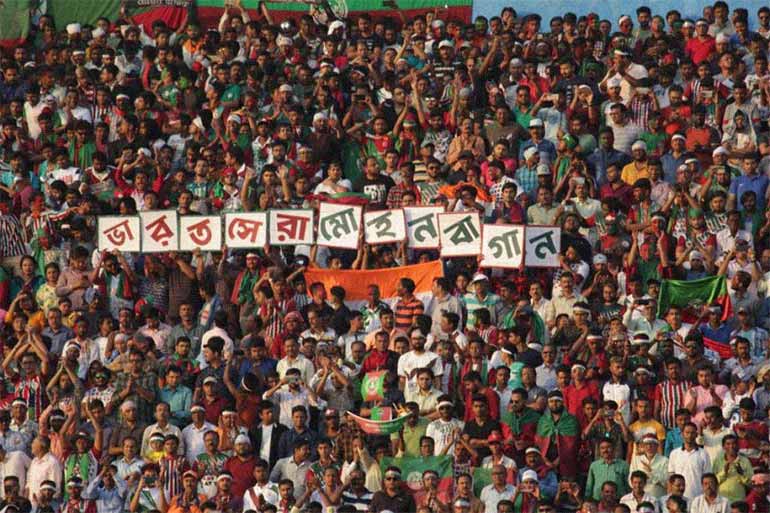Celebrating Coochbehar on Mohun Bagan Day! Why, though?

Following Mohun Bagan’s epic 1911 victory against the East Yorkshire Regiment, the poet Karuna Nidhan Bandyopadhyay had this to say in the Ashwin 1318 edition of ‘Manasi’ magazine:
“The son of the nation has awoken, crowds on the street
In the women’s quarters, Bengal’s beauties smile oh so sweet
The Bengali has breached the White man’s defence
The skies resound to the song of crazy innocence
Our nation will never forget this message of victory
Well done Mohun Bagan! You have made history!”
(“জেগেছে আজ দেশের ছেলে পথে লোকের ভিড়,
অন্তঃপুরে ফুটল হাসি বঙ্গরূপসীর।
গোল দিয়েছে গোরার গোলে বাঙালির আজ জিত,
আকাশ ছেয়ে উঠছে উধাও উন্মাদনার গীত।
আজকের এই বিজয়বাণী ভুলবে নাকো দেশ,
সাবাশ সাবাশ মোহনবাগান! খেলেছ ভাই বেশ!”)
Today, the 29th day of July, is Mohun Bagan Day. A day overwhelmingly associated with pride, emotion, and joy. The genesis dates back to the beginning of India’s freedom movement in the 1880s. In order to do his bit for the nationalist cause, Bhupendranath Basu, in association with the Mitra and Sen families of Calcutta’s Mohun Bagan area, established ‘Mohun Bagan Sporting Club’ on August 15, 1889. The newborn club reportedly played its first match at Mohun Bagan Villa, against Eden Hindu Hostel.

On the eve of the club’s first anniversary celebrations, a prominent invitee, Prof. F.J. Rowe of Presidency College, wanted to know if the club was in any way linked to rifle shooting, angling, or similar sports. When told that it was not, he advised that the name be changed to ‘Mohun Bagan Athletic Club’. The rest, of course, is history. Or at least, the history that time has remembered.
The name of Coochbehar hasn’t really featured prominently in this history. Why should it? The answer lies in our story for today.
As anyone with a basic knowledge of India’s sporting history knows, 1911 was a landmark year for Indian football. On July 29 of that year, eleven barefooted Mohun Bagan players defeated the mighty East Yorkshire Regiment in the final of the IFA Shield. As Bengal and the country exploded in joy and patriotic fervour, a Times of India headline read, ‘Rout of the king’s soldiers in boots and shoes by barefooted Bengali lads’. The Standard Cycle Company printed and distributed free of cost more than two lakh copies of a halftone photograph of the victorious team.

The wondrous thing is, six of the team’s eleven members were actually village boys from Coochbehar. The ruler of the erstwhile princely state, Maharaja Nripendra Narayan Bhoop Bahadur, had asked the men to play in boots, offering to pay for them. But the boys had refused, because they were more comfortable playing in their bare feet. The six - Bhuti Sukul, Rajen Sengupta, Kanu Roy, Abhilash Ghosh, Bijoydas Bhaduri and Shibdas Bhaduri - would have been joined by a seventh, Sharat Singh, had it not been for injury.
Bhuti Sukul, a student of Jenkins School, lived in a large house near Coochbehar station. Rajen Sengupta, who stayed in the Jenkins School hostel, was known as the ‘lion of Mohun Bagan’. Abhilash Ghosh was related to Biharilal Ghosh, a veteran resident of Hajpara and an employee of the household department at the royal palace. Bijoydas Bhaduri had come to Coochbehar to play from Faridpur in what is now Bangladesh, never to go back home. In 1911 itself, he had single handedly scored six goals against the Royal Fusiliers. As for team captain Shibdas Bhaduri, the Maharaja himself had arranged for a monthly stipend for him.

This is the reason why Coochbehar will forever be associated with the Mohun Bagan victory. The story goes that as the victory procession went past Fort William, somebody asked Shibdas, “When are they (the British) leaving?” The captain’s response was, “When we win this shield again.” Stunning but true, the next time Mohun Bagan won the tournament was in 1947. Who says history has no sense of humour?
Click here to read this article in Bengali
Source: Bongodorshon archives; ‘Maharaja Nripendra Narayan o Unishsho Egaror Shieldjoyee Mohun Bagan Club’ by Chintu Sen










